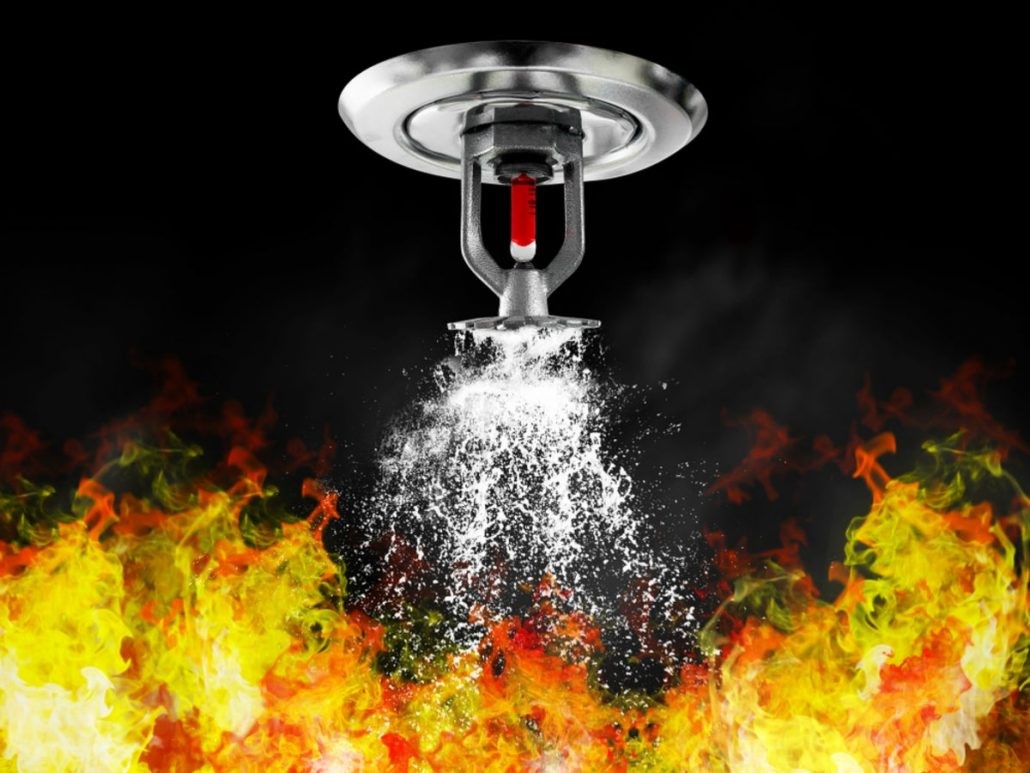Sprinkler systems remain the optimal manner in which to suppress fires in commercial and industrial properties. While sprinkler system use in buildings dates back to the 19th century, they are in fact still the best manner to ensure the safety of lives and protect infrastructure.
In light of the recent Bank of Lisbon building fire tragedy in Johannesburg, the topic of building regulation and city bylaw compliance is a major discussion of contention, serving as a wake-up call to numerous public and private sector organisations. With no cause of the blaze being reported as yet, City of Johannesburg Executive Mayor Herman Mashaba has indicated that efforts to extinguish the fire were hampered by a lack of sufficient water pressure in the building – an imperative safety requirement in a building of this size. And while there are a number of methods used to extinguish building fires, none are more effective than that of automatic sprinkler systems.
Automatic sprinkler systems
According to Marcel Ley, Regional Manager Victaulic South Africa, automatic sprinkler systems have sustained an enviable record of protecting life and property for more than a century, yet there are still common misconceptions surrounding the operation and effectiveness of these systems.
“South Africans incur millions of rands in fire damage loss each year, with commercial property fires not only threatening lives, but also a business’ assets and ultimately inhibit its ability to continue operating,” he explains. “While some may see the innovation as a dated method, its effectiveness cannot be questioned. It is imperative that the system components of these fire suppression systems function as intended, lending to the fact that all components need to be well-maintained, tested and serviced on time to ensure functionality and reliability.”
And while regular testing is required, it’s often the case that some companies neglect this in favour of cutting costs, and it is not an aspect of contention until tragedy strikes. According to South African agency, the Automatic Sprinkler Inspection Bureau (ASIB), SABS regulation 0287 denotes that a sprinkler system is recommended for inspection every 13 weeks to ensure correct operation of the sprinkler head as well as the system.
Many argue that sprinkler systems cause immense water damage, however, according to the ASIB, a sprinkler system utilises around 10% of the total water than that of a fire brigade would use when dealing with fires of similar sizes. Further, the rapid response of the sprinkler system usually results in containing or suppressing the fire at its developing stage where the fire department take over. This, coupled with the increased response time for emergency services to arrive at site further lends to the ideology that sprinkler systems are the sure-fire way to go.
Although the intricacies of the sprinkler system network may not be ground-breaking in its configuration, the components making up the system are truly where its benefits are showcased.
Components of a fire sprinkler system
“The main components of a fire sprinkler system comprise of the water supply pipework and a network of sprinkler heads that activate in the event of a fire, releasing water from the system to extinguish the fire below,” comments Ley. “Water supply can be in the form of a public or municipal water supply for small installations, or more reliable, independent water tanks and dedicated fire pumps for larger installations.”
ASIB comments that each sprinkler head is an individual heat sensitive element, with the liquid contained in the sprinkler head being heat-sensitive and expanding under heat to an extent where it cannot be contained. The bulb then ruptures and allows water to flow from the sprinkler head in a pre-determined distribution pattern in order to extinguish the fire.
“As the most important component of the sprinkler system, the sprinkler head and its accompanying components undoubtedly deserve the utmost attention. Further, one must be aware that these sprinkler heads should not be painted as seen in a number of operations. These heads are constructed to exacting operational standards, and once painted, the paint applied may result in the binding of the sprinkler head seals, which could result in the sprinkler head delaying its intended operation, or possibly not functioning at all,” he explains.
Victaulic’s role in the sprinkler innovation sector
Victaulic’s role in the sprinkler innovation sector has recently been further enhanced with the introduction of its Style V9 Firelock™ IGS Installation-Ready™ sprinkler coupling. The single-bolt coupling is optimised for sprinkler installation, and utilises Victaulic’s proprietary IGS groove specification allowing for pressures up to 17bar.
Ley closes by urging business’ to be aware and competent of the risks involved in non-compliance in fire system maintenance. The associated risks well outweigh the costs involved in employing an agency to monitor the system’s effectiveness, and ultimately reduce hazards to infrastructure and human life.

